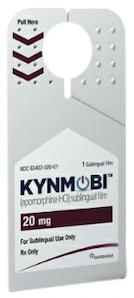Apomorphine Interactions
There are 598 drugs known to interact with apomorphine, along with 10 disease interactions, and 1 alcohol/food interaction. Of the total drug interactions, 202 are major, 394 are moderate, and 2 are minor.
- View all 598 medications that may interact with apomorphine
- View apomorphine alcohol/food interactions (1)
- View apomorphine disease interactions (10)
Most frequently checked interactions
View interaction reports for apomorphine and the medicines listed below.
- Activated Charcoal (charcoal)
- Adderall (amphetamine / dextroamphetamine)
- Adderall XR (amphetamine / dextroamphetamine)
- Ambien (zolpidem)
- Ativan (lorazepam)
- Azilect (rasagiline)
- Cialis (tadalafil)
- Iodides (sodium iodide)
- L-Arginine (arginine)
- Lyrica (pregabalin)
- Metoprolol Tartrate (metoprolol)
- Morphine Sulfate ER (morphine)
- Neupro (rotigotine)
- Norco (acetaminophen / hydrocodone)
- Paracetamol (acetaminophen)
- Percocet (acetaminophen / oxycodone)
- Protonix (pantoprazole)
- Quercetin (bioflavonoids)
- Seroquel (quetiapine)
- Sinemet (carbidopa / levodopa)
- Sinemet CR (carbidopa / levodopa)
- Stalevo 150 (carbidopa / entacapone / levodopa)
- Viagra (sildenafil)
- Vicodin (acetaminophen / hydrocodone)
- Vitamin C (ascorbic acid)
- Vitamin D3 (cholecalciferol)
- Vitamin K2 (menaquinone)
- Vyvanse (lisdexamfetamine)
- Xanax (alprazolam)
- Xarelto (rivaroxaban)
Apomorphine alcohol/food interactions
There is 1 alcohol/food interaction with apomorphine.
Apomorphine disease interactions
There are 10 disease interactions with apomorphine which include:
- alcoholism
- asthma
- cardiovascular/cerebrovascular disease
- dyskinesia
- hypersomnia
- liver disease
- QT prolongation
- renal dysfunction
- hypotension
- psychosis
More about apomorphine
- apomorphine consumer information
- Compare alternatives
- Pricing & coupons
- Reviews (4)
- Side effects
- Dosage information
- During pregnancy
- Drug class: dopaminergic antiparkinsonism agents
- Breastfeeding
- En español
Related treatment guides
Drug Interaction Classification
| Highly clinically significant. Avoid combinations; the risk of the interaction outweighs the benefit. | |
| Moderately clinically significant. Usually avoid combinations; use it only under special circumstances. | |
| Minimally clinically significant. Minimize risk; assess risk and consider an alternative drug, take steps to circumvent the interaction risk and/or institute a monitoring plan. | |
| No interaction information available. |
Further information
Always consult your healthcare provider to ensure the information displayed on this page applies to your personal circumstances.


